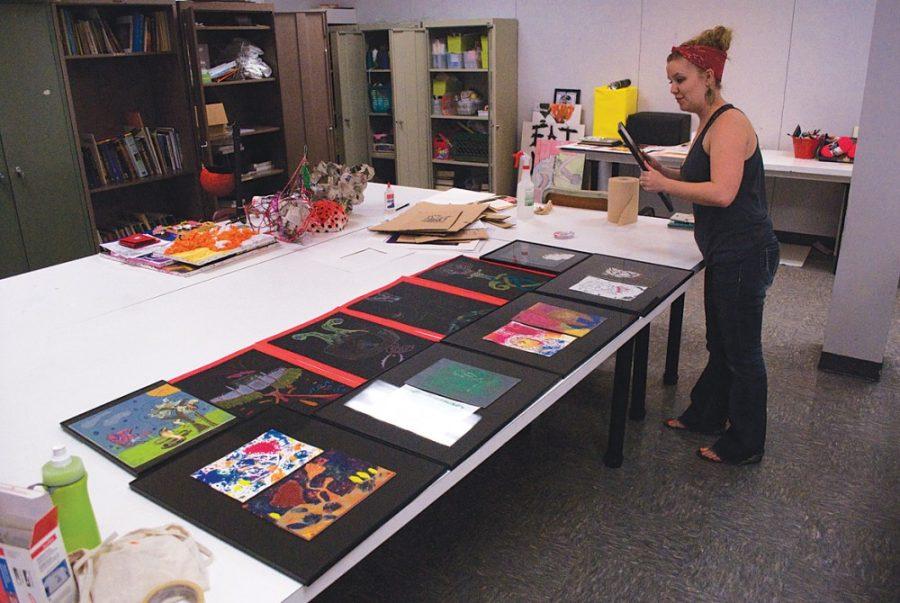Andy Warhol. Michelangelo Merisi da Caravaggio. Wassily Kandinsky. Georgia O’Keeffe. Edgar Degas. All famous artists in their own right, each began their legacy with one tool — an idea.
This “tool” is also a fundamental for the UA’s young artists, whose work will premiere at the Wildcat Art Exhibition this Saturday in the Student Union Memorial Center Gallery from 11 a.m. to 1 p.m. Over 360 works by students from Wildcat Art will be on display.
The next great Jackson Pollock or Pierre-Auguste Renoir could very well be one of the 5- to 18-year-old artists showcased at the exhibition.
Run by the School of Art, the exhibition is the culmination of work produced by the students of Wildcat Art, an eight-week art course taught by students in the undergraduate and graduate art and visual culture education program. A requisite course for art education majors, the program gets young minds thinking about art outside of the crayon box, and university students out from behind their desks and to the front of the classroom.
“It’s open to students, well, kids, of all ages K-12 who … are interested in art and already have a love for art,” said Jordan Ray, a Wildcat Art teacher. “We just kind of scaffold that and help them develop their love of art by giving them different projects or different experiences with art so they can expand their ideas.”
The program puts creative young minds to work exploring skills and concepts in contemporary and modern visual arts under the instruction of a small group of pre-service art educators in weekly three-hour classes. Working with different mediums, students are exposed to “experiences in movement and contemporary dance, narrative and storytelling, collographic printing, cyanotype photography, post-modern architecture, clay, stop-frame animation and other art-making processes,” said co-directors Barbara Bergstrom and Darden Bradshaw in an email.
The exhibition is in its 19th year and the course has continued to see unprecedented success in providing children with the opportunity and knowledge to expand their creative interests. This semester alone, about 90 students were enrolled in the program, said Bergstrom and Bradshaw. The program encourages students of all ages and skill levels to pursue art, emphasizing their individual ideas as a means to self-expression.
“Art, when you don’t know a lot about art, just seems like ‘art,’ an extra-curricular, it’s something people do just because they like it,” said Ray, who teaches kindergarten through first-grade.
“But I think it’s really important to education because it helps you develop critical thinking skills in analyzing art or reflecting on your personal ideas that you want to put out there.”
Aiding art education students in creating their own visual arts lesson plans, says Bergstrom and Bradshaw, is central to the Wildcat Art program’s intentions.
“I think it really validated my choice to become an art education major,” said Jenna Robey, a Wildcat Art teacher. “It was really great to boost my confidence and make me feel like this is really what I want to do.”
Wildcat Art is a collaborative learning process whereby both the students and the instructors explore communication through art, whether at the age of 5 or 25.
“That’s the main thing with art: Art can really be anything, so you have to be open to accepting new ideas,” Ray said.









